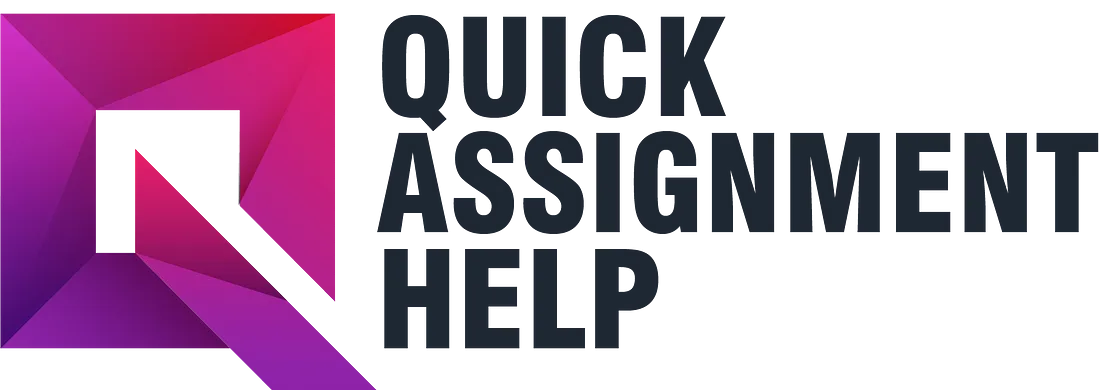A 68-year-old client lives alone and is independent with all ADLs, has no restrictions for mobility, and is competent, and oriented x4

A 68-year-old client lives alone and is independent with all ADLs, has no restrictions for mobility, and is competent, and oriented x4. The client is on a fixed income but has enough to manage a modest lifestyle. The client has family and social supports but is very independent and is proud of her self-reliance. The client’s height is 5’ 6”, weight is 210 lb. / 95.25 kg.
Please answer the following:
- What is the client’s BMI?
- Identify what screening tools you would use to assess nutritional and exercise knowledge, and why?
- One Outcome/Intervention/
Rationale: - Identify one outcome/goal that is reasonable, measurable and realistic. Identify 1 nursing intervention for the outcome and give rationale for the intervention.
- Identify what weakness in the client’s life may be impacting the client’s activity and diet?
- What referrals would you make and why?
- (Use references for your responses, not just opinion.)
Expert Answer and Explanation
Aging Adult Case Study
One’s weight affects their health status considering that being overweight raises one’s risk of developing various conditions including hypertension. For a person to be in good health, they need to maintain normal or average weight because this can lower the risk of chronic illnesses. However, this does not mean people should rely on weight to indicate good health because a person may still be sick if their weight is low.
The Body Mass Index (BMI) provides the means of determining if an individual’s weight may cause health issues (Arnold, Holmes & Rosenthal, 2019). Therefore, calculating the BMI is crucial when it comes to patient assessment, and after determining that a patient is overweight, a provider has to come up with a realistic and meaningful outcome including an intervention to achieve the outcome as described in this study.
The Client’s BMI
The BMI equals to kg/m2, and considering that the client weighs 95.25 kg, and she has a height of 5’6’’ which translates to 1.5240 meters, the BMI for the client is 92.25/1.52402m. This yields 48.33 kg/m2. The client is therefore overweight, and there is likelihood that she may develop health problems.
Screening Tools to use to Assess Nutritional and Exercise Knowledge (Why)
Considering that the client is overweight, she needs to be screened to assess her nutritional and exercise knowledge. To perform the screening, a provider would use screening tools, and given the client’s age, the most appropriate tool for nutrition would be Food Frequency Questionnaire (FFQ). With the FFQ, the clinician would assess the kinds of foods the client consumes including the frequency with which she consumes it.
The rationale for selecting the tool is that it is easy to administer, and it provides a reliable measurement of nutritional behavior (Speer & McPhillips, 2018). Measuring the level of the patient’s physical activity can be achieved using the Exercise Assessment and Screening for You (EASY). This is a tool developed to help assess the level of a person’s physical activity, and it is particularly suitable to the elderly. The tool would therefore benefit the client.
Identification of a Reasonable, Measurable and Realistic Goal
I want to help the client to reduce her weight by 17kgs within a span of six months by using available resources to educate her on how she can improve her physical activity, and nutritional behaviors.
Identification of the Nursing Intervention for the Outcome and its Rationale
The nursing intervention that can help achieve the outcome is patient education. To educate the client, the nurse may use various methods including printed materials to show her the kinds of lifestyle choices that can jeopardize her wellbeing and health in general. Having a one on one conversation about her weight including how she can manage her weight by for instance, limiting the intake of certain foods including the foods with high calories, can support health loss efforts.
When educating the patient, the nurse may emphasize working with her to build an intervention framework that includes information that the patient may eat and the types of routine activities she can perform to manage her weigh. The rationale for choosing patient education is that it would help change the client’s behavior by directing her to the right path to embracing desirable behaviors.
The Weakness in the Client’s Life that is impacting the Client’s Activity and Diet
The client lives alone and this might be the reason why she has excessive weight. Loneliness tends to affect people’s weight, and there are various explanations presented to explain the weight-loneliness relationship. For example, loneliness affects the quality of sleep, which in turns contributes to the weight gain. From the biological perspective, the cortisol levels tend to rise if a person is lonely for long and with the rise in the level of this hormone, one’s weight may increase (Yahia et al., 2016). Therefore, loneliness associated with living alone seems to exacerbate the issue surrounding the client’s weight.
The Referrals I would make and the Reasons for such Referrals
I would make referrals if there is a sign that the client’s weight poses health risks to her. For example, I would refer her to bariatric surgery because such a surgical intervention can be effective not only in reducing her weight but limiting her exposure to various conditions including diabetes. I would also refer her to resources including those published on the American Diabetes Association (ADA) so that she can learn about her to take care of her own health (Koehler & Drenowatz, 2019). I would recommend that she visit a cardiologist to assess the health of heart because obesity is associated with a higher risk of cardiovascular issues.
Conclusion
In conclusion, being overweight can increase the likelihood of a person developing heart problems among other conditions. Nursing intervention for an obese patient should start with patient assessment with emphasis on examining how well the patient understands behaviors or lifestyle choices that can put her health at risk. This is accompanied by patient education where the nurse educates the patient on how she can manage her weight (Suresh et al., 2022).
References
Arnold, A., Holmes, E., & Rosenthal, M. (2019). Building a Patient-Centered Weight Management Program: A Mixed Methods Project to Obtain Patients’ Information Needs and Ideas for Program Structure. Pharmacy (Basel, Switzerland), 7(4), 165. https://doi.org/10.3390/pharmacy7040165.
Koehler, K., & Drenowatz, C. (2019). Integrated Role of Nutrition and Physical Activity for Lifelong Health. Nutrients, 11(7), 1437. https://doi.org/10.3390/nu11071437.
Speer, S. A., & McPhillips, R. (2018). Initiating discussions about weight in a non-weight-specific setting: What can we learn about the interactional consequences of different communication practices from an examination of clinical consultations?. British journal of health psychology, 23(4), 888–907. https://doi.org/10.1111/bjhp.12322.
Suresh, K., Holtrop, J. S., Dickinson, L. M., Willems, E., Smith, P. C., Gritz, R. M., & Perreault, L. (2022). PATHWEIGH, pragmatic weight management in adult patients in primary care in Colorado, USA: study protocol for a stepped wedge cluster randomized trial. Trials, 23(1), 26. https://doi.org/10.1186/s13063-021-05954-7.
Yahia, N., Wang, D., Rapley, M., & Dey, R. (2016). Assessment of weight status, dietary habits and beliefs, physical activity, and nutritional knowledge among university students. Perspectives in public health, 136(4), 231–244. https://doi.org/10.1177/1757913915609945.
Place your order now for a similar assignment and get fast, cheap and best quality work written by our expert level assignment writers. Use Coupon: NEW30 to Get 30% OFF Your First Order
Use Coupon: NEW30 to Get 30% OFF Your First Order

FAQs
What is a malnutrition screening tool?
A malnutrition screening tool is a set of criteria or a questionnaire designed to quickly identify individuals who may be at risk of malnutrition. These tools are commonly used in healthcare settings to assess patients’ nutritional status and identify those who may require further evaluation or intervention. Malnutrition screening tools are valuable in identifying individuals at an early stage, allowing healthcare professionals to address nutritional issues promptly.
One widely used malnutrition screening tool is the Malnutrition Universal Screening Tool (MUST). The MUST assesses three key parameters:
- Body Mass Index (BMI): Determines if the individual is underweight.
- Unintentional Weight Loss: Assesses recent weight loss, which can be an indicator of malnutrition.
- Acute Disease Effect: Considers whether the individual has a condition that may impact nutritional intake.
What are the screening tools to assess nutritional knowledge?
There are various screening tools and questionnaires designed to assess nutritional knowledge in individuals. These tools are often used in research, clinical settings, or educational programs to evaluate an individual’s understanding of nutrition concepts. Here are a few examples:
- Nutrition Knowledge Questionnaire (NKQ):
- The NKQ is a commonly used tool that assesses general nutrition knowledge. It covers various topics such as macronutrients, micronutrients, dietary guidelines, and food sources.
- General Nutrition Knowledge Questionnaire (GNKQ):
- Similar to the NKQ, the GNKQ is designed to measure general nutrition knowledge and may include questions related to dietary recommendations, food groups, and nutrient functions.
- Nutrition Knowledge Survey (NKS):
- The NKS evaluates knowledge related to dietary choices, nutrient content, and health implications. It may include questions about reading food labels, understanding nutritional information, and making healthy food choices.
- Health Professionals’ Nutrition Knowledge Survey (HPNKS):
- Specifically designed for healthcare professionals, the HPNKS assesses the nutritional knowledge of individuals working in health-related fields. It may cover topics relevant to patient counseling, dietary guidelines, and nutrition interventions.
- Rapid Eating and Activity Assessment for Patients (REAP):
- The REAP tool is used to quickly assess an individual’s diet and physical activity habits. It includes questions related to food choices, portion sizes, and overall dietary patterns.
- Nutrition Literacy Assessment Instrument (NLit):
- The NLit tool evaluates not only knowledge but also literacy skills related to nutrition. It may include questions that assess an individual’s ability to comprehend and apply nutrition information.
- Nutrition Attitude Survey (NAS):
- While not solely focused on knowledge, the NAS assesses attitudes and beliefs related to nutrition. It provides insights into an individual’s perceptions and feelings about dietary choices.


I am a professional nursing assignment expert offering comprehensive academic support to university nursing students across various institutions. My services are designed to help learners manage their workload effectively while maintaining academic excellence. With years of experience in nursing research, case study writing, and evidence-based reporting, I ensure every paper is original, well-researched, and aligned with current academic standards.
My goal is to provide dependable academic assistance that enables students to focus on practical training and career growth.
Contact me today to receive expert guidance and timely, high-quality nursing assignment help tailored to your academic needs.

